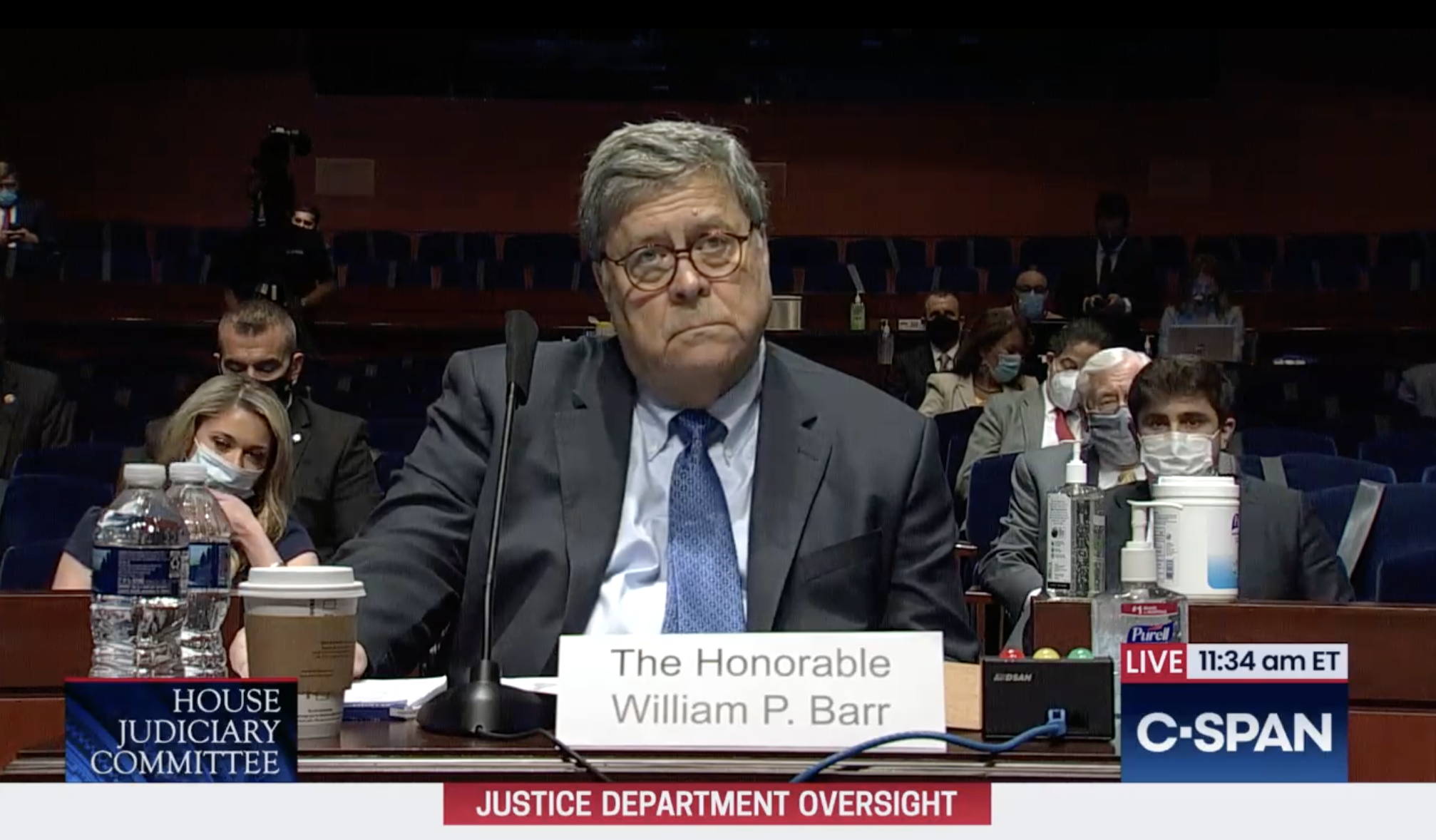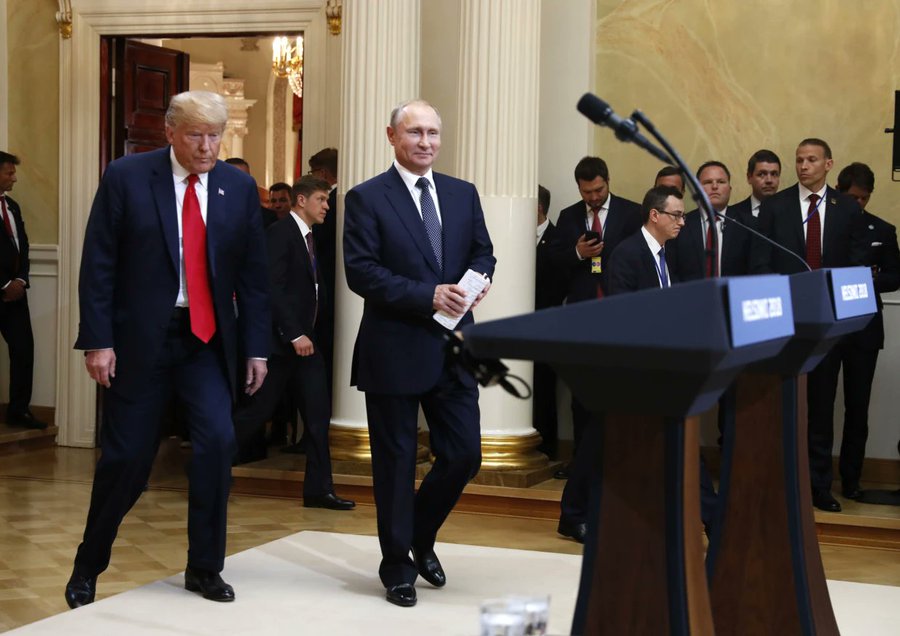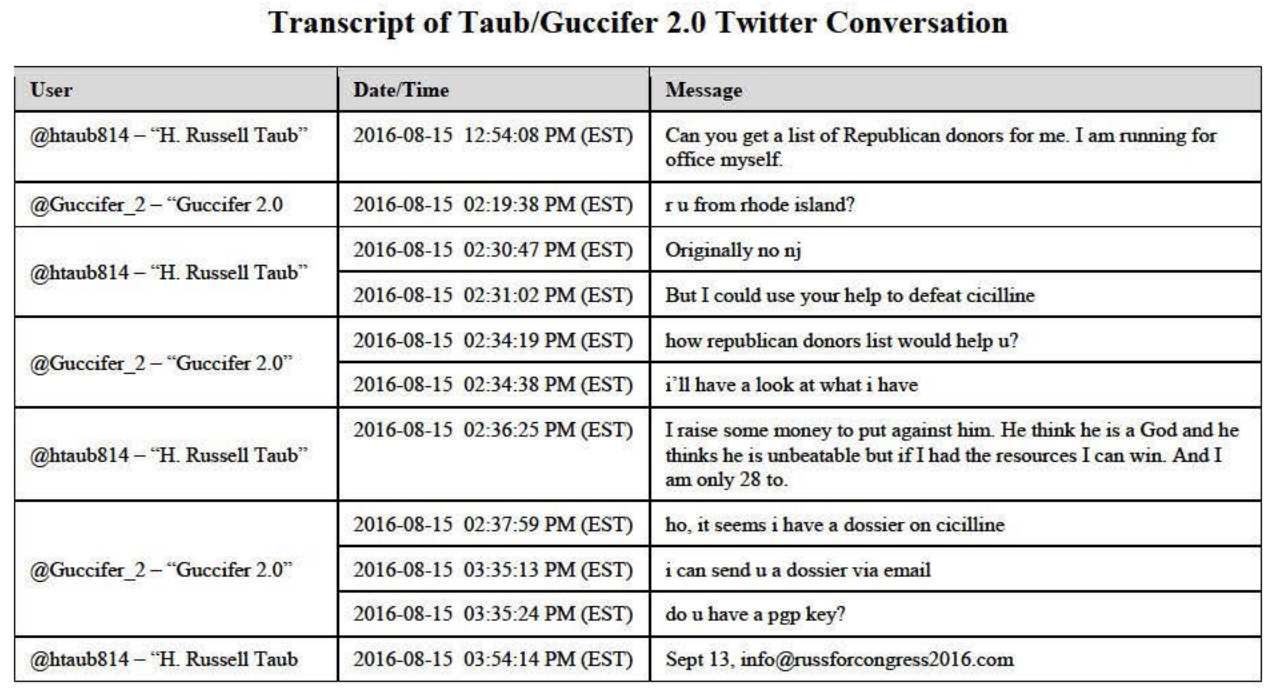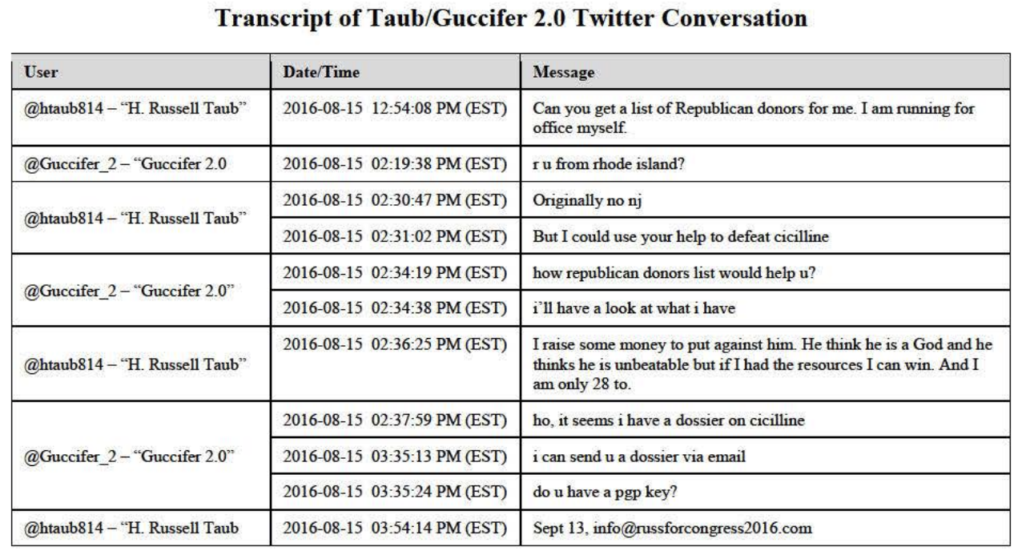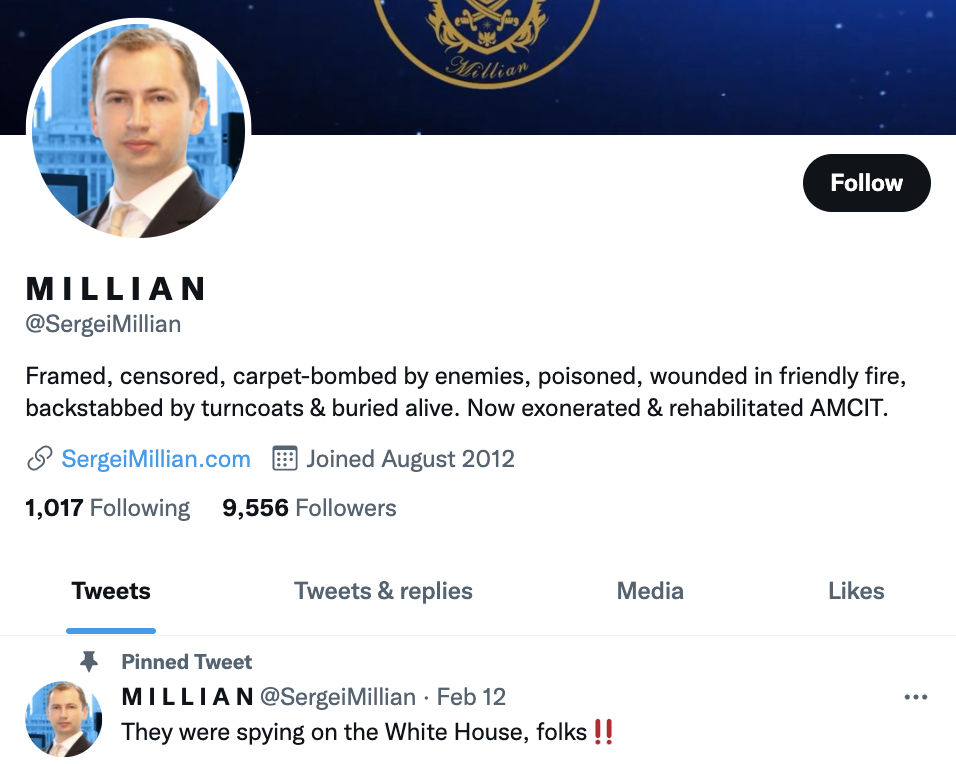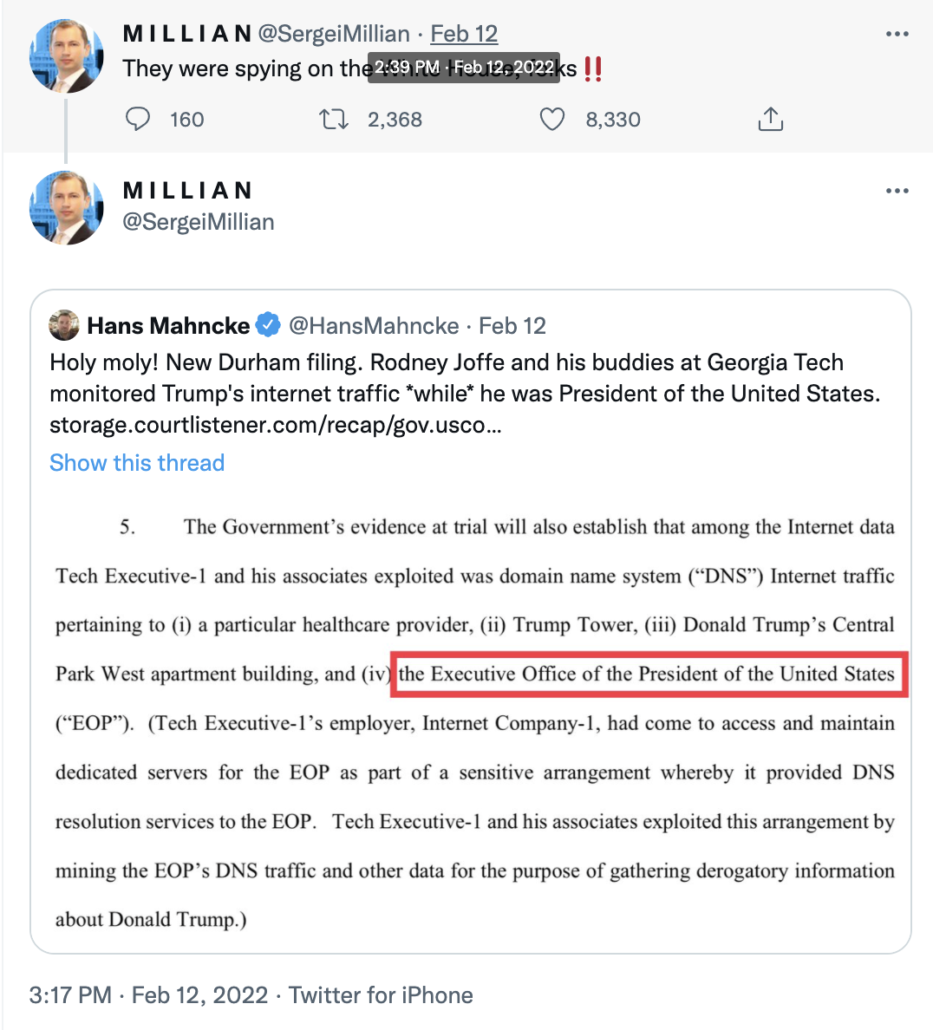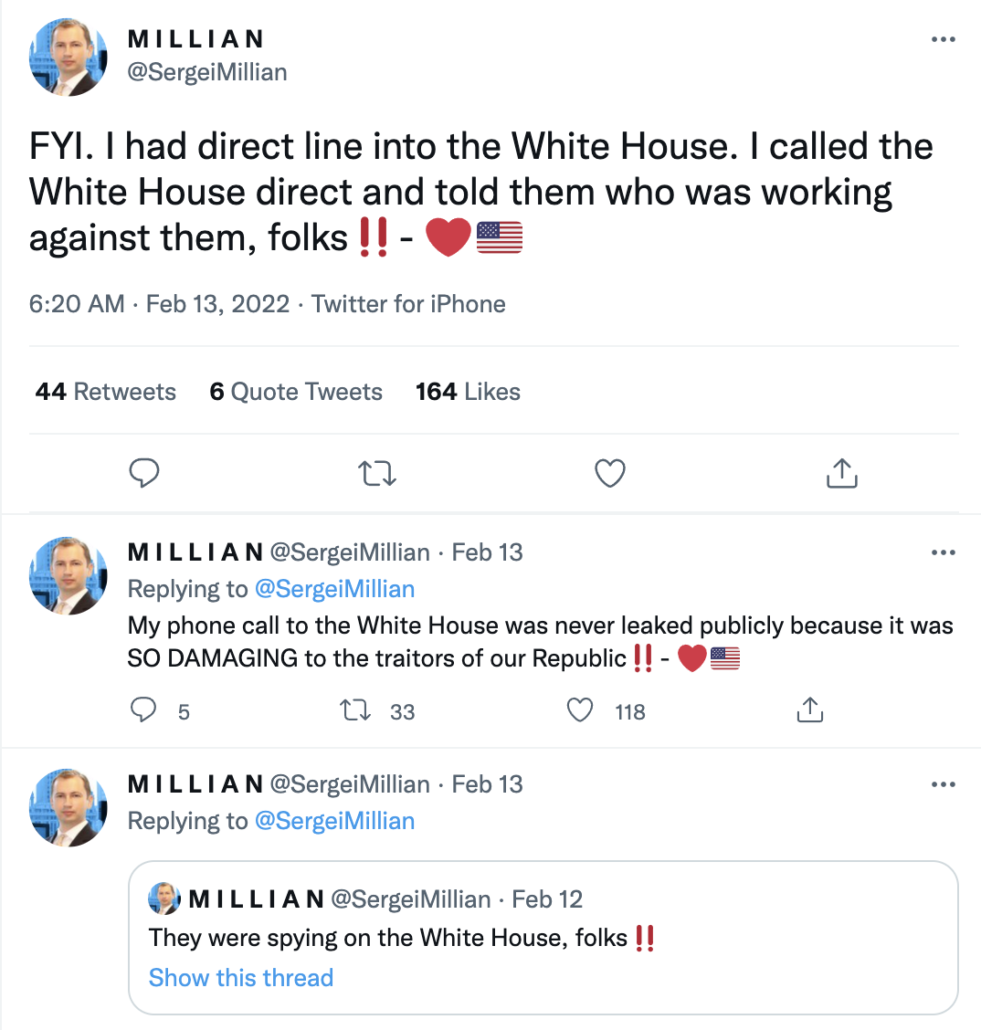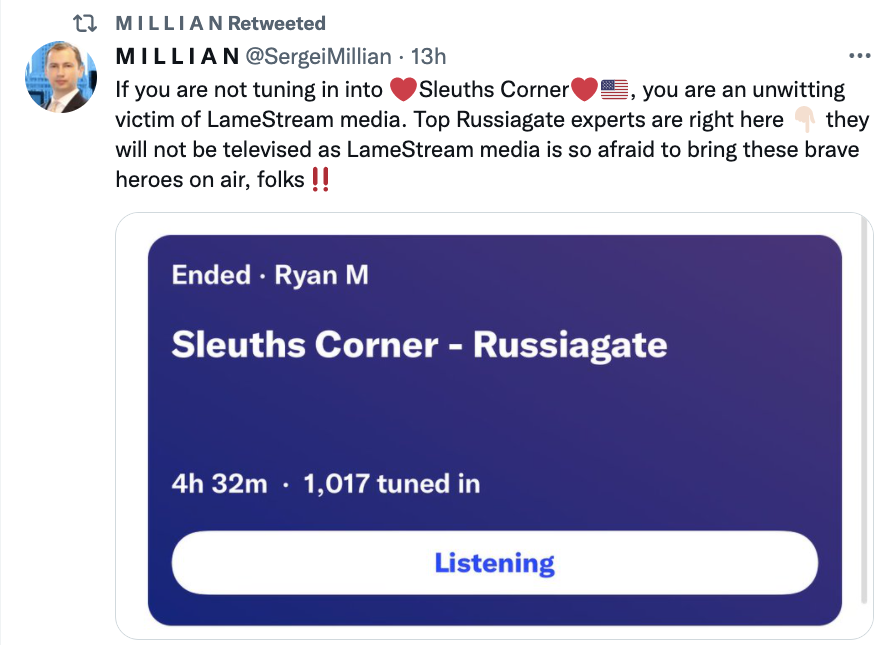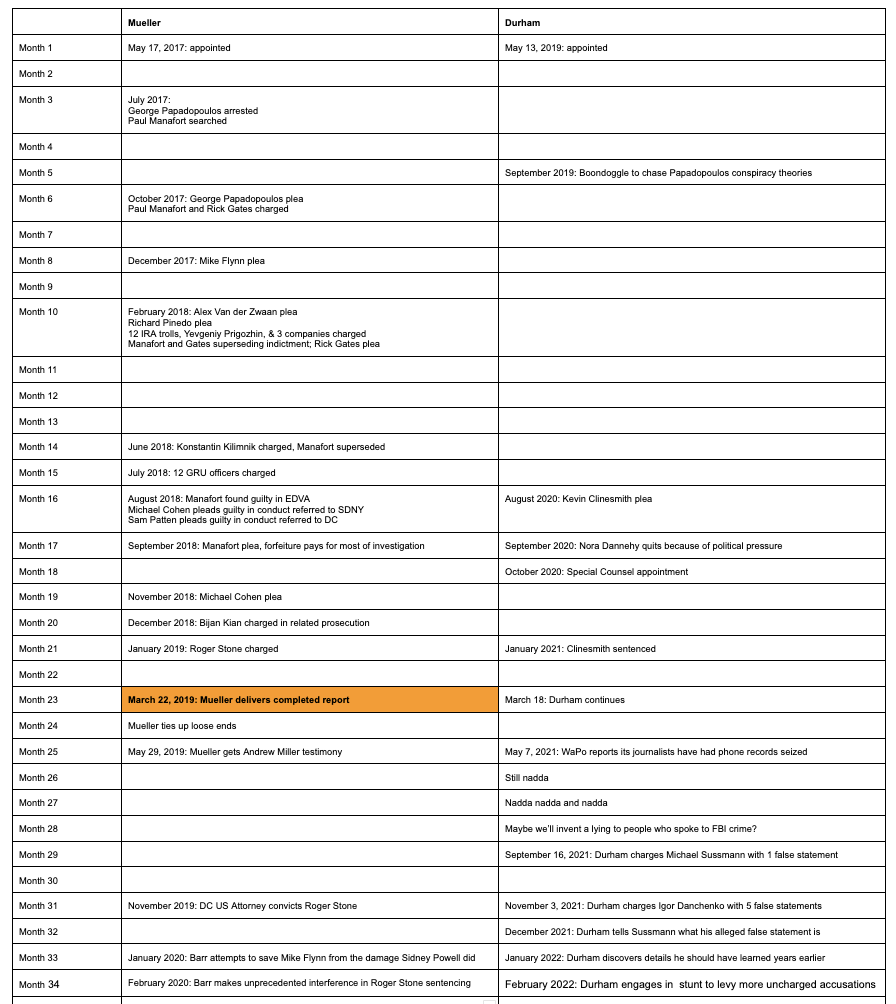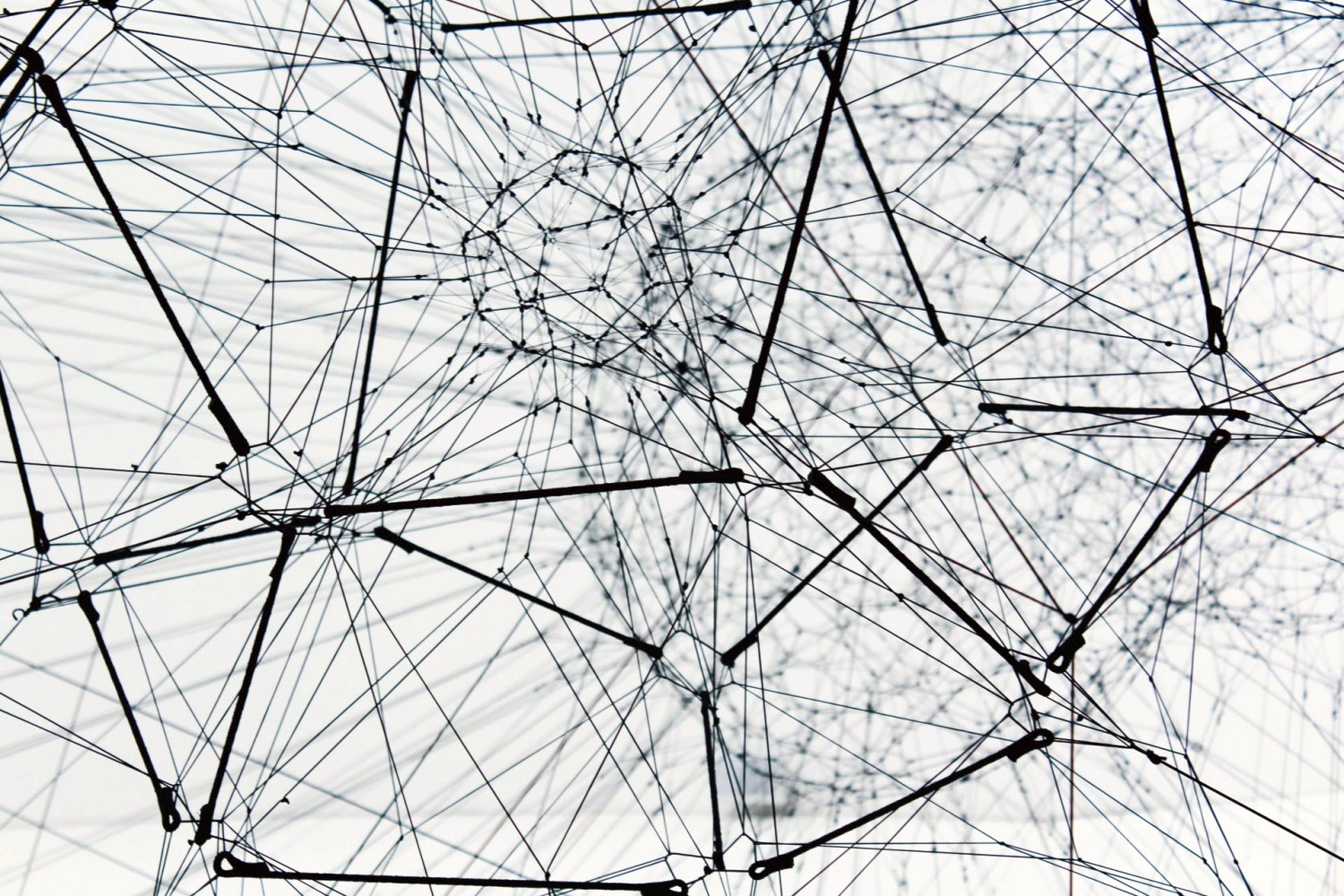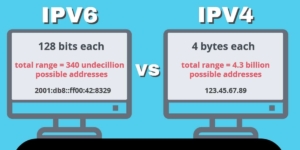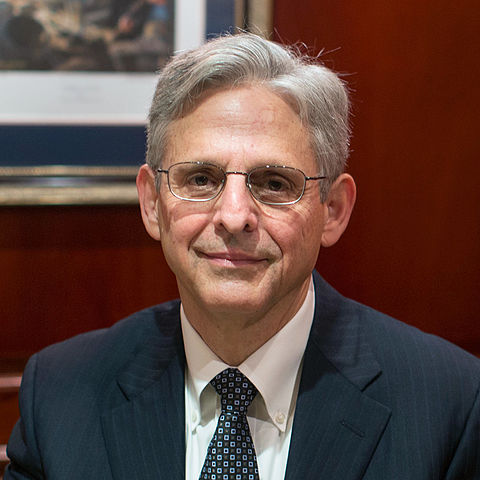Happy Valentines Day, the day on which TV lawyers proclaim that DOJ has let the statutes of limitation on Trump crimes expire, in this case, Trump’s request of Jim Comey that he let the Mike Flynn investigation go.
As I noted in a relevant post last week, Randall Eliason wrote a column last week demanding that the “Biden Justice Department [] issue a report on the Mueller report.”
Today, Ben Wittes and Quinta Juercic wrote a worthwhile piece positing five different possibilities for how Garland dealt with the Mueller Report. Those five are:
- “Garland considers the matter closed as a result of Barr’s having closed it.”
- DOJ “review[ed] Barr’s judgment but agrees with him on any of a number of legal positions that would make a prosecution of the former president nearly impossible.”
- DOJ “quietly reopened the matter, at least for paper review—that is, not for investigation but to review the conclusions based on the collected evidence—and agreed with Barr’s judgments on the facts.”
- DOJ “quietly began reviewing Barr’s judgment and is letting certain statutes of limitations lapse because it considers the later fact patterns more plausible criminal cases than the earlier ones.”
- “The Garland-run Justice Department never even considered the question of whether to, well, consider the question.”
It’s a worthwhile piece because it gets inside the brain of a DOJ institutionalist and attempts to game out how they might think.
But their discussion is absolutely silent about several pieces of public evidence showing Garland’s DOJ taking action, even while demanding that Garland, himself, “fill the silence.”
That is, they make the mistake of claiming DOJ has been entirely silent. It has not been. They simply haven’t listened to what DOJ has already said.
“The matter” was not closed as of November 2020
Jurecic and Wittes treat “this matter” as a self-evident whole, without defining what they mean by it. I assume when they use the term, “this matter,” they’re referring to Trump’s obstructive actions described in the second Volume of the Mueller Report.
Such shorthand is why, in my own post, I pointed out that most people engaging in this discussion (and I include Jurecic and Wittes in this group), account for the fact not all of Trump’s criminal exposure was in the second Volume. Materials unsealed in September 2020, for example, confirm that DOJ continued to investigate Trump for a big infusion of cash from an Egyptian bank in September 2016 until that summer (CNN’s reporting on it confirmed that timing).
A footnote unsealed (and therefore buried and still all-but unreported) the day before the 2020 election revealed that the investigation into whether Roger Stone conspired with Russia continued after Mueller shut down. Redactions that (in an earlier release) were identified as relating to the Stone matter treated that matter as an ongoing investigation in November 2020.
Similarly, in October 2020, DOJ treated the investigation into a pardon dangle for Julian Assange as an ongoing investigation. In fact, one of the issues that Lawfare treats as exclusively a matter of obstruction –Trump’s direction to Corey Lewandowski to order Jeff Sessions to shut down the entire Russian investigation — likely relates closely to the pardon dangle to Assange, because it came days after Stone told Assange he was intervening with the highest level of government to alleviate Assange’s woes.
We don’t know how many of the ten referrals still redacted in November 2020 remain ongoing; when DOJ released information to Jason Leopold last week, they just chose to release the four pages covered by a DC Circuit order and not a full reissued report. But we do know that “the matter” of the Mueller investigation was not closed as recently as November 2020.
DOJ IG was investigating follow-on obstruction
Both before Trump was ousted by voters and since, reports confirmed that DOJ’s Inspector General was investigating things that should be treated as follow-on obstruction, most explicitly Billy Barr’s efforts to undercut the Roger Stone prosecution but also Barr’s preferential treatment of Paul Manafort as compared to Michael Cohen (the latter will be part of Michael Horowitz’s review of BOP COVID response). Given DOJ IG’s past work, it’s not clear that this will be very critical of Barr’s own role.
One way or another, though, we have weeks-old confirmation that some of it remains under review. Depending on what DOJ IG finds, it’s possible (though unlikely) that might provide predicate to reopen past decisions.
But such a review also means that, because DOJ IG reviews add years to any investigative process, there will be a significant delay before we hear about such matters.
Merrick Garland has told you what he thinks about the OLC memo on prosecuting a President (and, to a lesser extent, OLC memos generally)
Two of Lawfare’s possibilities, especially the second, rely on a deference to OLC, including the declination memo that Amy Berman Jackson partially unsealed (and about which further unsealing the DC Circuit is currently considering).
We know that Garland’s DOJ will defer to most previous OLC memos, in part because his DOJ did so in fighting further unsealing of this memo. But we know even more about what Garland thinks of the memo prohibiting charging a president from an exchange on the topic Garland had with Eric Swalwell in October.
Garland: Well, Office of Legal Counsel memoranda, particularly when they’ve been reviewed and affirmed by Attorneys General and Assistant Attorneys General of both parties, it’s extremely rare to reverse them, and we have the same kind of respect for our precedents as the courts do. I think it’s also would not normally be under consideration unless there was an actual issue arising and I’m not aware of that issue arising now. So I don’t want to make a commitment on this question.
Swalwell: I don’t want to talk about any specific case but, just, in general, should a former President’s suspected crimes, once they’re out of office, be investigated by the Department of Justice?
Garland: Again, without, I don’t want to make any discussion about any particular former President or anything else. The memorandum that you’re talking about is limited to acts while the person was in office, and that’s all I can say.
Swalwell: And should that decision be made only after an investigation takes place before deciding beforehand a general principle of we’re not going to investigate a former President at all? Would you agree that if there are facts, those should be looked at?
Garland: Again, you’re pushing me very close to a line that I do not intend to cross. We always look at the facts and we always look at the law in any matter before making a determination.
In the exchange, Garland makes quite clear that, “it’s extremely rare to reverse” OLC memos because, “we have the same kind of respect for our precedents as the courts do.” Garland also explained that memo and any others (including Barr’s declination memo), “would not normally be under consideration unless there was an actual issue arising and I’m not aware of that issue arising now.”
One reason the memo is not at issue right now is because, “The memorandum that you’re talking about is limited to acts while the person was in office.” But as has often been ignored (though I pointed it out last month), the most recent known version of an OLC memo prohibiting the indictment of a sitting president is significantly premised on the constitutionality of a President being prosecuted after he leaves office even if he was acquitted by the Senate for the same conduct in an impeachment trial.
Randolph Moss, serving as Assistant Attorney General for OLC in 2000, famously wrote the following:
Our view remains that a sitting President is constitutionally immune from indictment and criminal prosecution.
Less famously, however, the first 11 pages of that more famous memo rely on this earlier OLC memo from Moss:
We conclude that the Constitution permits a former President to be criminally prosecuted for the same offenses for which he was impeached by the House and acquitted by the Senate while in office.
By stating that those odious OLC memos remain valid — that is, by deferring to OLC precedent — Garland was in the same breath saying that a former President can be indicted, including for things he was acquitted of in the Senate.
Obviously, Mueller’s findings never made it to the Senate. But Trump’s attempt to coerce Ukraine did and Trump’s attempted coup did.
There are four relevant investigations that tell you how Garland’s DOJ has approached this
In their piece and podcast, Jurecic and Wittes speak as if what Garland would do is entirely hypothetical, as if we don’t know what DOJ would consider palatable regarding earlier criminal exposure.
Except we do know, a bit, because four of the eight investigations into Trump flunkies that have been publicly confirmed provide some insight. For example:
- Tom Barrack: Barrack confirmed in a recent filing what prior reporting had laid out: this investigation arose out of the Mueller investigation. “As early as December 2017, Mr. Barrack voluntarily produced documents and met with prosecutors in the Special Counsel’s Office investigation, which was led by Robert Mueller and included prosecutors from the Eastern District of New York.” It’s possible it was the first of those ten referrals that remained sealed in November 2020. If it was, it is an indication DOJ would pursue a prosecution arising out of the Mueller investigation that was substantially complete before Trump left, though even in that case it took four months after Garland was sworn in.
- Erik Prince: It’s not clear whether the investigation into Erik Prince that Billy Barr shut down in 2019-2020 arose out of the Mueller investigation (though it is clear that any Mueller investigation into Prince had been closed by September 2020). I first alluded to a renewed investigation into Prince in this post, and NYT has since publicly confirmed it. I’m no more certain about the scope of the renewed investigation than the NYT, but I do know it is in a different District and it does overlap with the prior investigation, at least somewhat. That doesn’t tell you what DOJ would require to reopen a closed Mueller investigation, but it does show that Lisa Monaco would permit a prior, closed investigation to be reopened, perhaps with a new hook or newly acquired evidence.
- Rudy Giuliani: The confirmed investigation into Rudy pertains to his Ukraine influence-peddling with a scope from May 2018 through November 2019. As such, except insofar as those actions were a continuation of efforts Paul Manafort had started in 2016, they say nothing about how Garland would treat a continuing Mueller investigation. But we do know one utterly critical fact and another key detail: First, the warrants to seize Rudy’s phones were approved on Monaco’s first day in office. That’s a pretty compelling piece of proof that Garland’s DOJ is not going to shy away from Trump’s closest flunkies. Significantly, SDNY successfully fought to get a privilege waiver spanning from January 1, 2018 (so before Rudy started Trump obstruct the Mueller investigation) through the date of seizure, April 28, 2021 (so through the attempted coup). This tells you that Garland’s DOJ could investigate Rudy for any of his suspected criminal actions, and no one would know about it.
- Robert Costello: Costello is the lawyer through whom, the Mueller Report describes, Rudy was dangling a pardon for Michael Cohen for back in April 2018 (so within the scope of the privilege review). Currently, he is both Rudy’s lawyer overseeing that privilege review and Steve Bannon’s lawyer. After getting Bannon out of his Build the Wall fraud indictment with a pardon (sound familiar?), Costello helped Bannon walk into a contempt indictment based off non-cooperation with the January 6 investigation. All that background establishes that Costello is just tangential to the Mueller Report (though where he appears, he appears as part of the efforts to obstruct the investigation). But the details of DOJ’s seizure of Costello’s toll records after he made some contradictory claims in FBI interviews on the Bannon contempt case are worth examining closely. That’s because DOJ’s interest in the toll records cannot pertain solely to the January 6 subpoena to Bannon; the scope of the seizure not only predates the subpoena, but predates the establishment of the committee entirely (and happens to cover the entirety of the privilege review Costello oversaw). It’s tough to know what to make of this, but it is indication, like the approval of warrants targeting Rudy, that Garland’s DOJ will take fairly aggressive action pursuing obstruction and other crimes.
Trump is likely on the hook for other obstructive actions
The Lawfare piece claims that, aside from the pardons of Manafort, Stone, and Flynn, there’s no new evidence pertaining to Mueller-related obstruction (and other crimes).
And it’s not like new evidence has emerged since Mueller issued his reports—save the 2020 pardons of Manafort, Stone and Flynn.
But that’s not true. On top of whatever evidence DC USAO obtained on Stone after Mueller shut down (one of which was Andrew Miller’s long-awaited testimony), the government appears to have obtained more evidence on the other example of direct conspiracy with Russia. In the years since Mueller finished, the government has apparently developed new certainty about two details Mueller expressed uncertainty about: Konstantin Kilimnik is a “known Russian Intelligence Services agent,” and he, “provided the Russian Intelligence Services with sensitive information on polling and campaign strategy” in 2016. That suggests DOJ obtained new evidence (and may be why FBI put a $250,000 reward out for Kilimnik’s arrest in summer 2020). Whatever new details are behind this increased certainty, it could change DOJ’s understanding of Manafort’s actions as well. Add in the fact that Treasury accuses Kilimnik of continuing such information operations into the 2020 election — when Rudy was the pivot point — and Trump’s three big scandals may be converging.
But there may well be other obstructive acts, pertaining to the Mueller crimes, as well. Amid all the discussion of Trump’s destruction or removal of classified Presidential Records when he left the White House, for example, there has been little consideration about whether any of those documents pertain to Mueller or the other two investigations Trump obstructed. The January 6 Commission has already confirmed, for example, that some of the Trump documents they obtained were ripped up, and since the investigation into January 6 started immediately, it is highly likely the attempted document destruction happened while the investigation was pending. CNN’s most recent update on Trump’s stand-off with the Archives (in which someone who sounds like Impeachment One Defense Attorney Pat Philbin refused to turn over a document NARA knew to come looking for) is consistent with obstruction, possibly tied to the original Perfect Transcript.
None of this is proof of discrete new evidence on obstruction. Rather, it looks more like the never-ending wave of obstruction all runs together, with the pardons for Stone and Flynn (either, like Stone, known to be under investigation or closely tied to someone, Sidney Powell, known to be) linking the obstruction of Mueller with the implementation of the coup attempt.
I can’t explain what, precisely, Garland’s DOJ is doing with the Mueller Report (besides prosecuting Trump’s top donor as a foreign agent on a referral from it). But it is simply false that DOJ has been silent about it.
Where DOJ has been speaking, however, is in active dockets and not in a three year old report.

